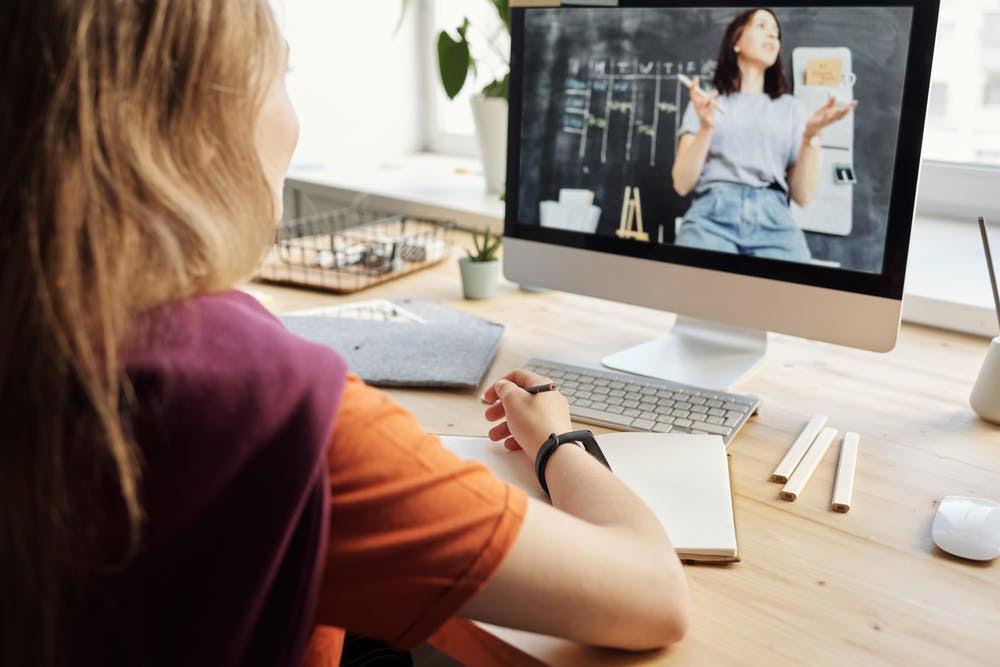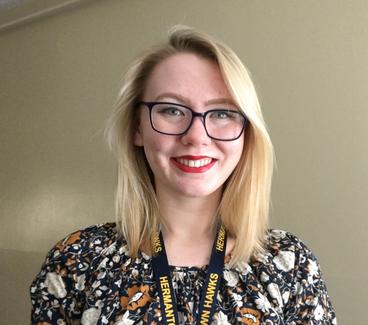The COVID-19 pandemic has created obstacles in schooling that both teachers and learners must work hard to overcome. Educators across the country have had to modify their methods of instruction during this time.
Classrooms look different due to COVID-19 safety measures. Class sizes are often smaller, students must socially distance, and masks must be worn to prevent the spread of the virus. Many schools adopted hybrid learning models, with both distance-learning virtually from home and face-to-face instruction.
As instruction has shifted to keep pace with these changes, student teachers have been working tirelessly. Keara Ballavance, Sarah Bodin, Noah Gagnon, and Olivia Nelson are four UMD student teachers who have been exploring different ways to develop and modify their teaching styles.
Educators are working together to learn how to best support students under these unforeseen circumstances. “It's a great experience to be teaching during the pandemic because you are learning with your fellow staff members,” says Keara, who’s teaching sixth-grade science at Northwestern Middle School in Poplar, WI.
Olivia has a placement at Chaska High School in special education. She points out that though there are more limitations online, it’s important to practice equity and have the same quality of education for both remote and in-person students.
Finding Ways to Sustain Engagement
The student teachers have found unique ways to engage and connect with their students, despite the distance that exists between them during this time.
Keara frequently asks herself, “How can I best accommodate students with what they need?” describing it as a “beautiful challenge.” She presents her students with a variety of material and introduces them to new things to promote classroom engagement and best support each individual.
Educators like Olivia and Sarah have incorporated more videos and discussions into their teaching to entertain and facilitate peer interaction. Noah, who is teaching science at Superior High School, says “pairing the online students with in-class students, especially during labs” has worked well. “It helps them feel like they are with us.”
The future education professionals stress the importance of making connections with their students to support them during this trying time. Sarah, who is teaching social studies at Hermantown High School, engages with her students by trying to get to know them as unique individuals through personal response and reflection assignments.
Keara stresses the importance of regularly checking in with students and adjusting instruction as necessary. Noah, echoes a similar idea, “I love interacting with students. Every teacher is trying to figure out what they’re doing and is being more experimental, doing things they wouldn’t try in a normal year.”
Different Placements, Similar Challenges
Although each student teacher’s field experience is at a different location, they are all facing similar challenges as a result of the pandemic. The student teachers agree that having content on different platforms is a difficult task. “It’s important to create universal content that can be accessed and understood in online formats,” Sarah says.
Another issue arises with time constraints, which make it difficult for the educators to build connections with their students. “I have wanted to really know who I’m teaching so I can adapt to their personal and individual needs but it’s hard to form those relationships if I’m only seeing them once a week,” says Keara. Noah faces a similar struggle as he sees his students just two hours, twice a week.
Online communication with students can also be tricky. Olivia explains how many students turn their cameras off on virtual learning platforms, like Zoom and Google Meet, making it difficult to communicate and preventing her from being able to read nonverbal cues.
The mandated mask-wearing policy can be a barrier to communication as well. “In direct relation to the pandemic, it’s so hard to teach with a mask on and teach students with a mask on. I can’t see your faces and read facial expressions to know if you understand, if you’re confused, or if you’re smiling,” says Noah.
"Roll with the Punches"
The student teachers have learned to be open to new ideas and different teaching methods. Keara emphasizes the importance of “adapting to what our education system is now,” and working hard to overcome the challenges that evolve.
Acclimating to the current climate has proven successful for this group of educators in many different ways. While Keara has learned about different technological tools for education as a result of transitioning to virtual formats, Sarah has been able to plan more fun and creative assignments for her students. The shrunken class sizes at Noah’s placement have enabled him to give more attention to each individual.
All in all, despite the challenges and adversity brought on by the pandemic, the student teachers have learned to be flexible, resourceful, and creative. Olivia says, “You have two choices: you can be discouraged and give up or you can roll with the punches and adapt.”




